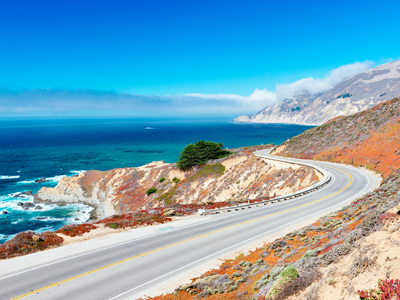
The Pacific Ring of Fire
This GCSE Geography quiz takes a look at the Pacific Ring of Fire. The GCSE syllabus requires that you know how volcanoes are formed, where in the world they are found and how the hazards they pose can be managed. With only a few exceptions, volcanoes are found in well-defined strips across the Earth. The Pacific Ring of Fire is a term that is used to describe one of these areas. It is a horseshoe shaped band of volcanoes that is found around the edges of the Pacific ocean. It stretches from near the tip of South America, northwards up the west coast, bends round through the Aleutian Islands, Japan, Indonesia, then out into the south Pacific and finally down to New Zealand.
Volcanoes are formed where molten magma forces its way through the Earth's crust to reach the surface. It is not just magma that comes out of a volcano, there is a lot of dust, ash, sometimes volcanic 'bombs' plus a lot of gases, some of which are toxic. The magma is called lava where it reaches the surface. This then solidifies over a long period of time, adding new (igneous) rocks to the crust.
Ready for more?
not all...
quizzers. Try to win a coveted spot on our Hall of Fame Page.







